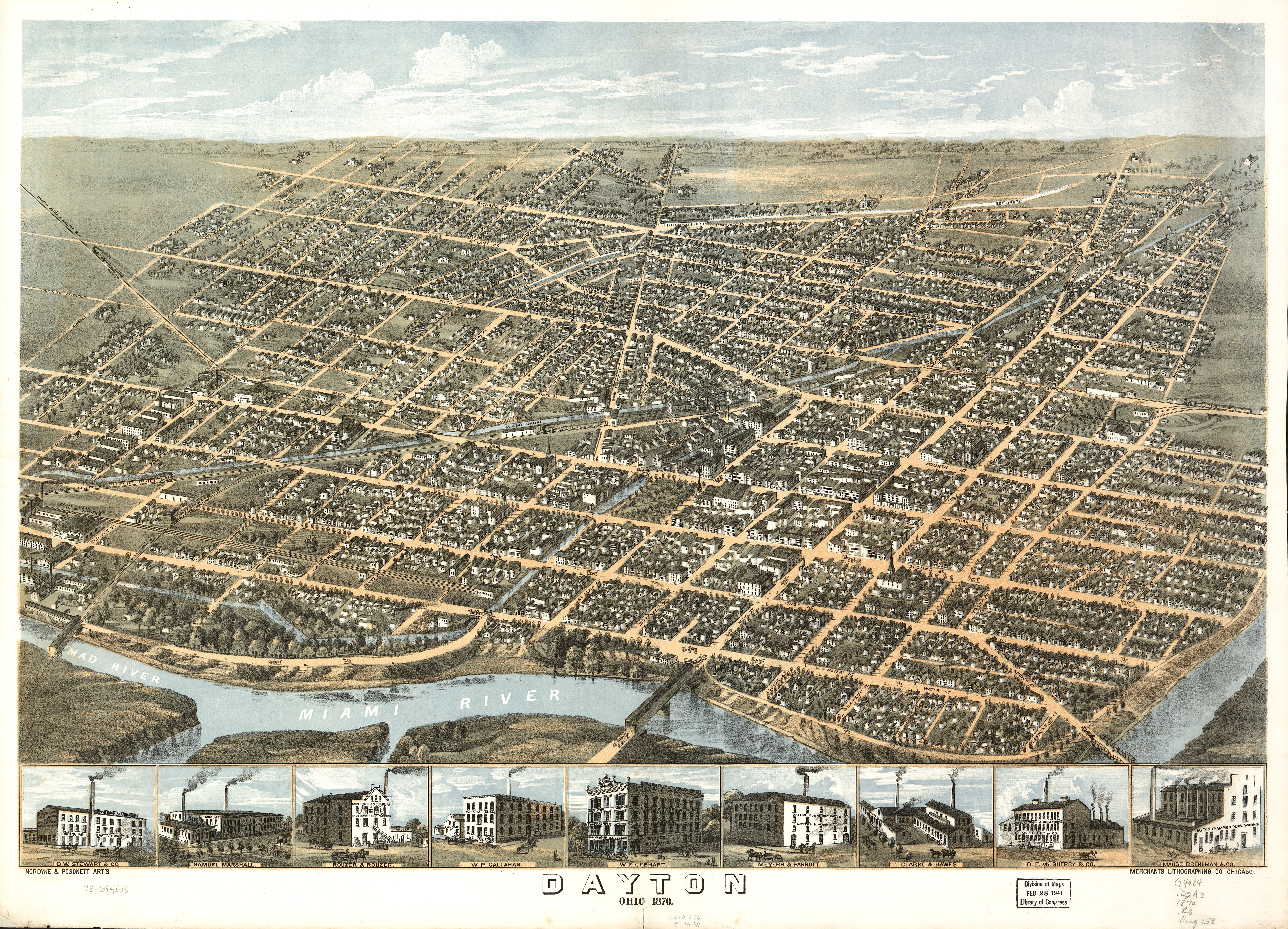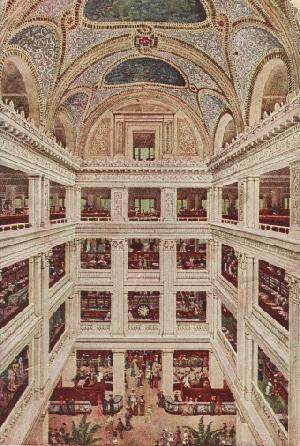|
Adolfas Valeška
Adolfas Valeška (15 March 1905, in Kybartai – 11 May 1994, in Kaunas, Lithuania) was a Lithuanian stained glass artist, painter, stage designer, and museum director who worked in Lithuania and in Chicago, Illinois. Valeška graduated from the Kaunas Art School in 1928. He then began work as a church decorator, moving on to co-found a museum of religious art in Kaunas. From 1939 to 1944 he served as director of the Vilnius Art Museum. During this period his work was exhibited in a number of venues, including the International Exhibition of Decorative Arts in Paris, 1935; the International Press Exhibition at the Vatican, 1935; and the International Exhibition of Decorative Arts in Berlin, 1937, where he earned a medal for designing the Lithuanian Pavilion. Anticipating the Soviet occupation of Lithuania at the end of World War II, in 1944 he emigrated first to West Germany and then to the United States, where he established a studio in Chicago. He designed and executed a ... [...More Info...] [...Related Items...] OR: [Wikipedia] [Google] [Baidu] |
Casimir Fatima Morkunas
Casimir is classically an English, French and Latin form of the Polish name Kazimierz. Feminine forms are Casimira and Kazimiera. It means "proclaimer (from ''kazać'' to preach) of peace (''mir'')." List of variations *Belarusian: Казімір *Catalan: Casimir *Croatian: Kazimir, Kažimir *Czech: Kazimír *Esperanto: Kazimiro *Galician: Casemiro, Casamiro *German: Kasimir *Hungarian: Kázmér *Italian: Casimiro *Kazakh: Qasym or Kasym *Latvian: Kazimirs *Lithuanian: Kazimieras *Polish: Kazimierz *Portuguese: Casimiro *Romanian: Cazimir *Russian: Казимир *Serbian: Казимир/Kazimir *Slovak: Kazimír *Slovene: Kazimir *Spanish: Casimiro *Swedish: Casimir *Ukrainian: Казимир *Vietnamese: Casimirô, Caximia *English: Casimir Royalty * Casimir I of Poland, Polish name Kazimierz Odnowiciel (the Restorer) (1015–1058) * Casimir II of Poland, Polish name Kazimierz Sprawiedliwy (the Just) (1138–1194) * Casimir III of Poland, Polish name Kazimierz Wielki (t ... [...More Info...] [...Related Items...] OR: [Wikipedia] [Google] [Baidu] |
Mosaic
A mosaic is a pattern or image made of small regular or irregular pieces of colored stone, glass or ceramic, held in place by plaster/mortar, and covering a surface. Mosaics are often used as floor and wall decoration, and were particularly popular in the Ancient Roman world. Mosaic today includes not just murals and pavements, but also artwork, hobby crafts, and industrial and construction forms. Mosaics have a long history, starting in Mesopotamia in the 3rd millennium BC. Pebble mosaics were made in Tiryns in Mycenean Greece; mosaics with patterns and pictures became widespread in classical times, both in Ancient Greece and Ancient Rome. Early Christian basilicas from the 4th century onwards were decorated with wall and ceiling mosaics. Mosaic art flourished in the Byzantine Empire from the 6th to the 15th centuries; that tradition was adopted by the Norman Kingdom of Sicily in the 12th century, by the eastern-influenced Republic of Venice, and among the Rus. Mosaic fell ou ... [...More Info...] [...Related Items...] OR: [Wikipedia] [Google] [Baidu] |
Sioux City, Iowa
Sioux City () is a city in Woodbury and Plymouth counties in the northwestern part of the U.S. state of Iowa. The population was 85,797 in the 2020 census, making it the fourth-largest city in Iowa. The bulk of the city is in Woodbury County, of which it is the county seat, though a small portion is in Plymouth County. Sioux City is located at the navigational head of the Missouri River. The city is home to several cultural points of interest including the Sioux City Public Museum, Sioux City Art Center and Sergeant Floyd Monument, which is a National Historic Landmark. The city is also home to Chris Larsen Park, commonly referred to as "the Riverfront", which includes the Anderson Dance Pavilion, Sergeant Floyd Riverboat Museum and Lewis and Clark Interpretive Center. Sioux City is the primary city of the five-county Sioux City, IA– NE– SD Metropolitan Statistical Area (MSA), with a population of 149,940 in the 2020 census. The Sioux City–Vermillion, IA–NE–SD Combi ... [...More Info...] [...Related Items...] OR: [Wikipedia] [Google] [Baidu] |
Pulpit
A pulpit is a raised stand for preachers in a Christian church. The origin of the word is the Latin ''pulpitum'' (platform or staging). The traditional pulpit is raised well above the surrounding floor for audibility and visibility, accessed by steps, with sides coming to about waist height. From the late medieval period onwards, pulpits have often had a canopy known as the sounding board, ''tester'' or ''abat-voix'' above and sometimes also behind the speaker, normally in wood. Though sometimes highly decorated, this is not purely decorative, but can have a useful acoustic effect in projecting the preacher's voice to the congregation below. Most pulpits have one or more book-stands for the preacher to rest his or her bible, notes or texts upon. The pulpit is generally reserved for clergy. This is mandated in the regulations of the Catholic Church, and several others (though not always strictly observed). Even in Welsh Nonconformism, this was felt appropriate, and in some ... [...More Info...] [...Related Items...] OR: [Wikipedia] [Google] [Baidu] |
Navy Pier
Navy Pier is a pier on the shoreline of Lake Michigan, located in the Streeterville neighborhood of the Near North Side community area in Chicago, Illinois, United States. Navy Pier encompasses over of parks, gardens, shops, restaurants, family attractions and exhibition facilities and is one of the top destinations in the Midwestern United States, drawing over nine million visitors annually. It is one of the most visited attractions in the entire Midwest and is Chicago's second-most visited tourist attraction. History Military usage Navy Pier opened to the public on July 15, 1916. Originally known as the "Municipal Pier", the pier was built by Charles Sumner Frost, a nationally known architect, with a design based on the 1909 Plan of Chicago by Daniel Burnham and Edward H. Bennett Its original purpose was to serve as a dock for freights, passenger traffic, and indoor and outdoor recreation; events like expositions and pageants were held there. In mid-1918, the pier was al ... [...More Info...] [...Related Items...] OR: [Wikipedia] [Google] [Baidu] |
Smith Museum Of Stained Glass Windows
The Smith Museum of Stained Glass Windows was an exhibition that opened in February 2000 at Chicago’s Navy Pier entertainment complex. It permanently closed in October 2014. It was the first American museum dedicated solely to the art of stained glass windows. Named after prominent Chicago collectors E.B. and Maureen Smith, the museum held over 150 individual pieces displayed in four galleries: Victorian, Prairie, Modern, and Contemporary. The majority of the works originally came from Chicago-area buildings, and a number of prominent artists are represented, including John LaFarge, Adolfas Valeška, and Ed Paschke. The collection contained religious themes, secular work, and some more unusual items, including a stained glass portrait of basketball player Michael Jordan, a window created from glass soda bottles, and Marie Herndl's "Queen of the Elves" (also called "The Fairy Queen"). The adjacent Richard H. Driehaus Gallery of Stained Glass Windows opened in 2001 and clos ... [...More Info...] [...Related Items...] OR: [Wikipedia] [Google] [Baidu] |
Holy Cross Church (Chicago)
Holy Cross Church (Chicago), referred to in Lithuanian as ''Šv. Kryžiaus Bažnyčia'', is a historic church of the Roman Catholic Archdiocese of Chicago located on West 46th Street in Chicago, Illinois. Built by Lithuanian immigrants, it bears a striking resemblance to many of Chicago's so-called " Polish Cathedrals" by virtue of the common heritage Poles and Lithuanians shared during the Polish–Lithuanian Commonwealth and reflected in their architectural tastes. Holy Cross merged with the nearby Immaculate Heart of Mary Church on 45th and Ashland to make one parish, Holy Cross - Immaculate Heart of Mary. In 2021, the parish was further united with two nearby churches. History At the turn of the 20th century, immigrants from Lithuania had been settling down in the Back of the Yards area for over a decade. Between 1870 and 1880, around 10,000 residents moved to Lake Township (referred to as "''Taunleikis''" by Lithuanians). Even after the township ceased to exist when it ... [...More Info...] [...Related Items...] OR: [Wikipedia] [Google] [Baidu] |
American History
The history of the lands that became the United States began with the arrival of the first people in the Americas around 15,000 BC. Numerous indigenous cultures formed, and many saw transformations in the 16th century away from more densely populated lifestyles and towards reorganized polities elsewhere. The European colonization of the Americas began in the late 15th century, however most colonies in what would later become the United States were settled after 1600. By the 1760s, the thirteen British colonies contained 2.5 million people and were established along the Atlantic Coast east of the Appalachian Mountains. After defeating France, the British government imposed a series of taxes, including the Stamp Act of 1765, rejecting the colonists' constitutional argument that new taxes needed their approval. Resistance to these taxes, especially the Boston Tea Party in 1773, led to Parliament issuing punitive laws designed to end self-government. Armed conflict began ... [...More Info...] [...Related Items...] OR: [Wikipedia] [Google] [Baidu] |
History Of Lithuania
The history of Lithuania dates back to settlements founded many thousands of years ago, but the first written record of the name for the country dates back to 1009 AD. Lithuanians, one of the Baltic peoples, later conquered neighboring lands and established the Grand Duchy of Lithuania in the 13th century (and also a short-lived Kingdom of Lithuania). The Grand Duchy was a successful and lasting warrior state. It remained fiercely independent and was one of the last areas of Europe to adopt Christianity (beginning in the 14th century). A formidable power, it became the largest state in Europe in the 15th century through the conquest of large groups of East Slavs who resided in Ruthenia. In 1385, the Grand Duchy formed a dynastic union with Poland through the Union of Krewo. Later, the Union of Lublin (1569) created the Polish–Lithuanian Commonwealth that lasted until 1795, when the last of the Partitions of Poland erased both Lithuania and Poland from the political map. Afte ... [...More Info...] [...Related Items...] OR: [Wikipedia] [Google] [Baidu] |
Oil Painting
Oil painting is the process of painting with pigments with a medium of drying oil as the binder. It has been the most common technique for artistic painting on wood panel or canvas for several centuries, spreading from Europe to the rest of the world. The advantages of oil for painting images include "greater flexibility, richer and denser colour, the use of layers, and a wider range from light to dark". But the process is slower, especially when one layer of paint needs to be allowed to dry before another is applied. The oldest known oil paintings were created by Buddhist artists in Afghanistan and date back to the 7th century AD. The technique of binding pigments in oil was later brought to Europe in the 15th century, about 900 years later. The adoption of oil paint by Europeans began with Early Netherlandish painting in Northern Europe, and by the height of the Renaissance, oil painting techniques had almost completely replaced the use of tempera paints in the majority ... [...More Info...] [...Related Items...] OR: [Wikipedia] [Google] [Baidu] |
Dayton, Ohio
Dayton () is the sixth-largest city in the U.S. state of Ohio and the county seat of Montgomery County. A small part of the city extends into Greene County. The 2020 U.S. census estimate put the city population at 137,644, while Greater Dayton was estimated to be at 814,049 residents. The Combined Statistical Area (CSA) was 1,086,512. This makes Dayton the fourth-largest metropolitan area in Ohio and 73rd in the United States. Dayton is within Ohio's Miami Valley region, north of the Greater Cincinnati area. Ohio's borders are within of roughly 60 percent of the country's population and manufacturing infrastructure, making the Dayton area a logistical centroid for manufacturers, suppliers, and shippers. Dayton also hosts significant research and development in fields like industrial, aeronautical, and astronautical engineering that have led to many technological innovations. Much of this innovation is due in part to Wright-Patterson Air Force Base and its place in the ... [...More Info...] [...Related Items...] OR: [Wikipedia] [Google] [Baidu] |
Marshall Field's
Marshall Field & Company (commonly known as Marshall Field's) was an upscale department store in Chicago, Illinois. Founded in the 19th century, it grew to become a large chain before Macy's, Inc acquired it in 2005. Its eponymous founder, Marshall Field, was a pioneering retail magnate. The company's flagship Marshall Field and Company Building on State Street in the Chicago Loop is a National Landmark. It was officially branded ''Macy's on State Street'' in 2006, when it became one of Macy's flagship stores. History Early years Marshall Field & Company traces its antecedents to a dry goods store opened at 137 Lake StreetPDX History of Marshall Field's Retrieved August 20, 2006. in , |





